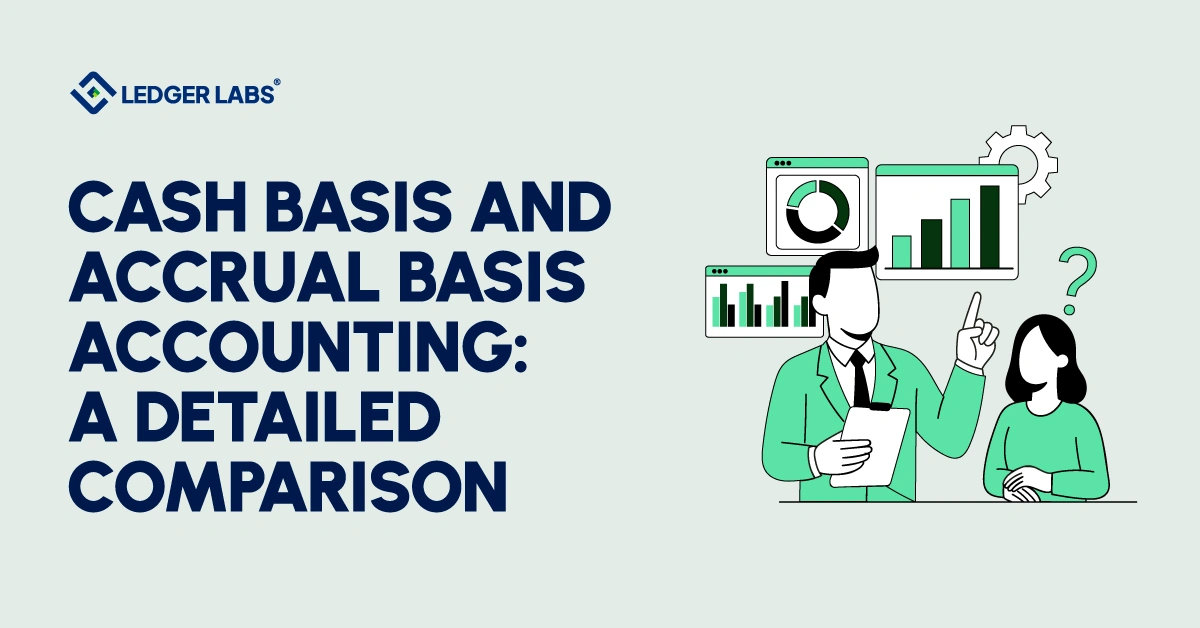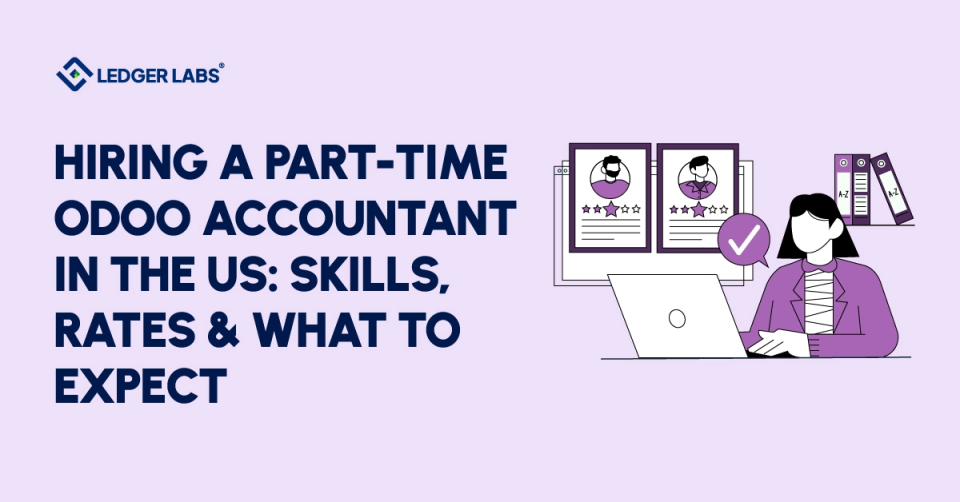You’re profitable on paper, but your bank account tells a different story – and your Odoo cash flow reports aren’t helping.
The gap between “profitable on paper” and “cash in the bank” has never been riskier, especially when your ERP setup is feeding you inaccurate data.
This guide walks you through everything you need to know about hiring the right specialist to fix your cash visibility problems.
Understanding the differences between cash basis and accrual basis accounting isn’t just bookkeeping jargon; it’s the key to knowing whether your business is truly profitable or just looks good on paper.
With the IRS cracking down on improper accounting method usage and lenders demanding greater financial transparency, picking the wrong method has never been riskier.
This guide walks you through both methods, when to use each, and how to avoid costly mistakes that trip up thousands of business owners every year.
Key Takeaways
- A true Odoo cash flow consultant blends ERP expertise with deep financial accounting knowledge—not just technical configuration skills.
- Common warning signs include inaccurate cash flow reports, delayed closes, and poor forecasting visibility.
- Consultants follow a structured four-phase process: diagnostic, configuration, forecasting integration, and training.
- Engagement models range from hourly ($150–$300/hr) to full projects ($8K–$25K) and retainers for ongoing CFO-level support.
- The best consultants provide training, documentation, and post-implementation support to sustain accuracy and prevent regression.
What Is an Odoo Cash Flow Consultant?
You’ve probably heard accountants throw around “cash basis” and “accrual basis” like everyone knows what they’re talking about, but here’s the truth: most business owners don’t fully understand the difference until tax season slaps them in the face.
So let’s fix that right now.
Cash basis accounting records income when you actually receive payment and expenses when you actually pay them. If a client pays you on January 15th for work you did in December, that income goes on your January books. Simple as that.
Accrual accounting records income when you earn it and expenses when you incur them—regardless of when money actually changes hands. So that same client payment? It shows up on your December books because that’s when you did the work and earned the right to get paid.
The historical reason we have two methods?
The IRS needed a way to let small businesses track money simply (cash basis) while ensuring larger companies reported complete financial pictures (accrual basis).
Also Read: Differences Between Cash Basis and Accrual Basis Accounting
5 Signs Your Business Needs an Odoo Cash Flow Consultant
Most businesses don’t realize they need specialized help until cash flow issues become critical. Here are five warning signs your Odoo setup needs expert intervention.
Sign #1: Your Cash Flow Statement Shows Wrong Results
Open your cash flow report in Odoo right now. Do you see a massive “Cash flows from unclassified activities” section? Are your operating activities missing obvious transactions? Those are symptoms of incorrect account tags and missing chart of accounts configuration. The business impact isn’t small—you can’t trust your financial data for planning, and board reporting becomes educated guesswork instead of data-driven decisions.
Sign #2: You Can't Forecast Cash Position Beyond 7 Days
If you’re constantly surprised by cash shortfalls and have no visibility into upcoming receivables or payables, you’re flying blind. This leads to missed payment deadlines, emergency financing needs that cost you thousands in fees, and lost vendor discounts you could’ve captured. The common cause? No forecasting integration and manual tracking in spreadsheets that’s always out of date.
Sign #3: Month-End Close Takes 15+ Days
Delayed reporting means late investor updates, poor decision-making timing, and team burnout. When your accounting team spends weeks on manual reconciliations and fixing journal entry errors, you’re dealing with a lack of automation and no proper bank reconciliation workflow. Companies with automated month-end close processes typically close in 5 days or less.
Sign #4: You're Growing But Cash Visibility Is Declining
Multiple entities, complex AR/AP, and no consolidated view? You can’t assess true liquidity or manage working capital effectively. This happens when your multi-company setup isn’t configured for consolidated cash reporting—a common issue as businesses scale.
Sign #5: Your Team Spends 20+ Hours/Week on Cash Flow Reporting
Manual exports to Excel, custom calculations outside Odoo, and constant data wrangling mean high labor costs, human error risk, and no real-time data. According to QuickBooks Small Business Research, businesses waste an average of 120 hours annually on manual financial reporting—time that could be automated.
How Odoo Cash Flow Consultants Fix Broken Financial Reporting?
Now that we’ve identified the problems, let’s explore how consultants actually solve them.
Understanding what consultants do helps you evaluate their value and set proper expectations.
Here’s the step-by-step methodology specialists use to diagnose and fix Odoo cash flow issues.
Phase 1: Diagnostic Assessment (Week 1)
The consultant starts by reviewing your chart of accounts structure and auditing how account types are assigned. They’re looking for misconfigurations—accounts tagged as “Operating” when they should be “Investing,” or bank accounts that aren’t properly categorized. They analyze your bank reconciliation workflows, examine posting patterns, and identify integration gaps with payment gateways or e-commerce platforms. You’ll get a gap analysis document that inventories every error and misconfiguration they find.
Phase 2: Configuration Fixes (Weeks 2-3)
This is where the technical work happens. They correct account tag assignments so your cash flow statement shows accurate Operating, Investing, and Financing activities. They configure automated bank reconciliation rules that match transactions without manual intervention. You’ll get both cash and accrual reporting options set up correctly, journal entry validation workflows that prevent errors before they happen, and custom cash position dashboards that show real-time data. The deliverable is a configured system with test transactions proving everything works.
Phase 3: Forecasting Integration (Week 4)
Here’s where forward-looking visibility comes in. The consultant connects your AR/AP aging reports to a 13-week cash forecast, sets up payment term tracking for DSO and DPO monitoring, and integrates third-party forecasting tools if you need them. They build scenario planning models—best case, worst case, and most likely—so you can see what happens if collections slow down or if you need to make a large purchase. For guidance on setting up financial forecasting in Odoo, this phase is critical.
Phase 4: Training & Handoff (Week 5)
The final phase ensures your team can maintain what’s been built. You’ll get training on proper journal entry posting, documentation explaining account tag usage guidelines, a troubleshooting playbook for common errors, and a monthly review cadence to keep everything accurate.
What Does an Odoo Cash Flow Consultant Cost?
After understanding what consultants do, your next question is obvious: what’s this going to cost me?
Understanding consultant pricing helps you budget appropriately and evaluate ROI. Here’s what to expect in 2025, including engagement models and typical project costs.
Hourly Consulting ($150-$300/hour)
This model works best for small projects like fixing specific account tag issues, configuring individual reports, or conducting training sessions. You’re typically committing to 10-40 hours total. Choose this option when you have internal Odoo expertise but need specialist guidance on cash flow specifics. A controller who understands Odoo but needs help setting up forecasting integration fits this model perfectly.
Project-Based ($8,000-$25,000)
Full cash flow module implementation falls here. You’re paying for a complete audit, configuration, forecasting setup, and training over 4-8 weeks. This is what you want for new Odoo implementations or major overhauls when your current setup is broken. The scope includes everything from Phase 1 diagnostic through Phase 4 handoff we covered earlier. Most SMBs spend $12,000-$18,000 for comprehensive cash flow optimization.
Retainer/Fractional CFO ($3,000-$8,000/month)
Growing businesses needing continuous financial expertise choose this option. You get 15-30 hours monthly of advisory plus technical support—think monthly close support, ongoing optimization, and strategic planning. The commitment is typically 6-12 months minimum. This essentially gives you part-time CFO expertise without hiring a full-time executive.
ROI Calculation Example:
Let’s say you spend $15,000 on initial project work plus $4,000/month retainer for six months. That’s $39,000 in year one. Now look at the value created:
Your staff time savings alone—20 hours per week at $50/hour—equals $52,000 annually. Add avoided cash shortfall costs (emergency financing fees and interest) at $10,000. Improved payment collection with a 2-day DSO improvement accelerates $15,000 in cash. Better vendor terms through capturing early payment discounts adds $8,000.
Price Factors That Impact Cost:
- Company complexity (single entity vs. multi-company operations)
- Transaction volume (directly affects automation requirements)
- Integration needs (e-commerce platforms, payment gateways, banks)
- Current system state (clean configuration vs. major fixes needed)
- Geographic location (US consultants typically charge more than offshore)
Also Read: Odoo Compliance Guide
How to Choose the Right Odoo Cash Flow Consultant?
Understanding value and cost is one thing, but choosing the right consultant is where most businesses struggle.
Not all Odoo consultants understand cash flow nuances. Use this checklist to evaluate candidates and make sure you hire someone who can deliver measurable results.
1. Specialized Cash Flow Experience (Not Just General Odoo)
Ask directly: “How many cash flow implementations have you completed?” Request case studies with specific DSO improvements or forecasting accuracy gains. Red flag: they only have general ERP experience with no cash-specific examples. You don’t want to be their first cash flow client.
2. Technical + Financial Accounting Knowledge
Test them: “Explain the difference between cash and accrual accounting in Odoo.” Verify they understand cash flow statement categories—Operating, Investing, Financing—and why proper categorization matters. Red flag: they can’t explain account tags or the chart of accounts structure in detail.
3. Industry Experience in Your Sector
Look for relevant experience. E-commerce businesses need someone who understands high transaction volume. SaaS companies need subscription billing expertise. Manufacturing requires inventory impact knowledge. Ask: “What cash flow challenges are unique to my industry?” Red flag: no relevant industry case studies or generic answers.
4. Integration Capabilities
Verify they’ve worked with your specific tools—payment gateways, e-commerce platforms, and bank connections. Ask: “How do you handle integration with [your specific tool]?” Red flag: They recommend replacing your tools instead of integrating them, which adds cost and complexity.
5. Training & Knowledge Transfer Approach
Ask: “What documentation and training do you provide?” Make sure it includes troubleshooting playbooks, not just configuration notes. You need your team to maintain the system after handoff. Red flag: no training plan or a “figure it out yourself” attitude. For ideas on effective Odoo training programs, documentation quality matters.
6. Ongoing Support Options
Look for retainer options, not just one-time projects. Ask: “What happens if issues arise three months after implementation?” Red flag: no post-implementation support available means you’re on your own when problems emerge.
5 Questions to Ask During Consultant Interviews
- “Walk me through your most recent cash flow implementation from diagnosis to handoff.”
- “How do you handle situations where Odoo’s native features aren’t sufficient?”
- “What’s your approach to forecasting—do you integrate third-party tools?”
- “Can you show me a before/after dashboard from a similar client?”
- “What metrics do you track to measure implementation success?”
The Bottom Line
Your Odoo system should give you confidence about your cash position, not anxiety about whether the numbers are right.
So what’s your next move?
Let us help you out.
Book a call with our Odoo accounting experts at Ledger Labs, and we will walk you through every single thing you need to know about how to choose an Odoo cash flow consultant.











